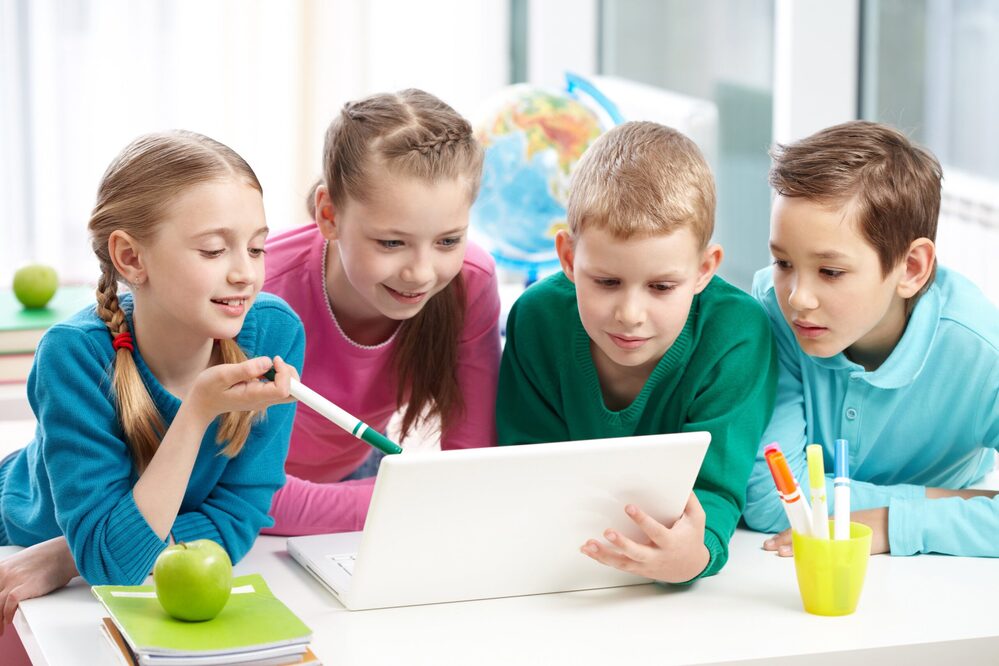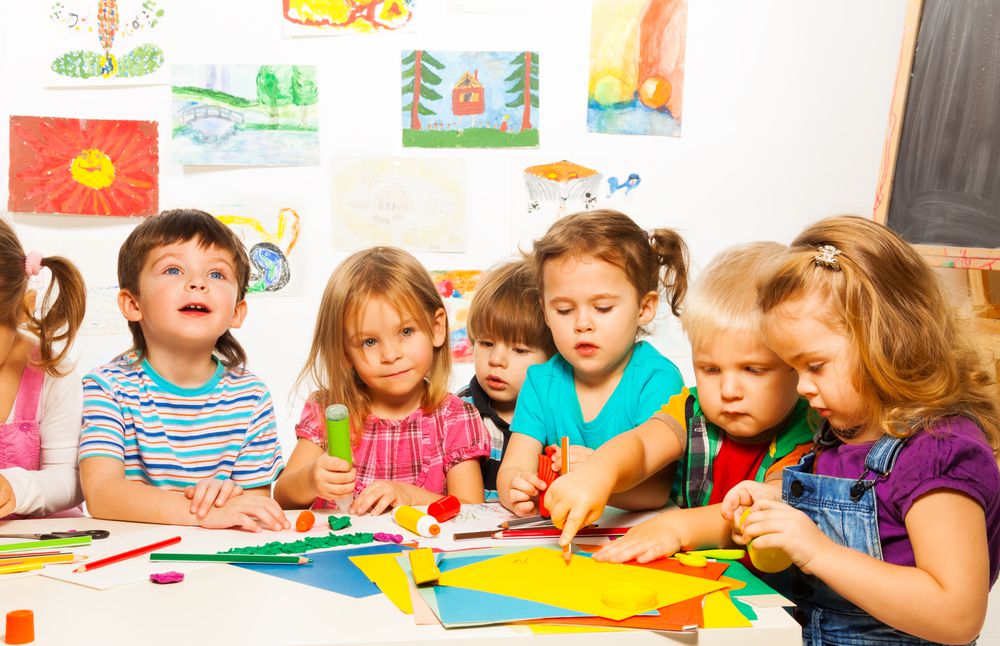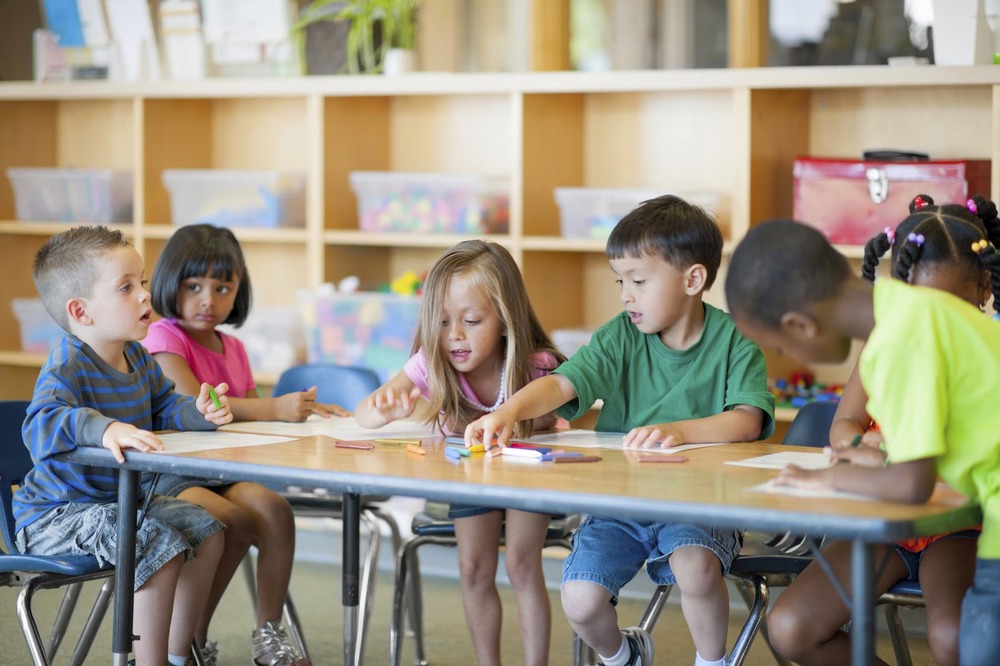Cultural learning matters nowadays; we’re all more interlinked than ever. It’s not just a question of learning a second language; it’s learning how people live, their traditions, and how they relate around the globe. That’s why, here at LearningTail, it’s essential that children learn the ropes of this.
We use an enlightened teaching method that strips away the layers of how cultures form and interact. This makes kids comfortable getting to know people from all kinds of backgrounds, learning how to speak and connect. Watch as we show you why learning about other cultures, country by country, and why it matters to get along in our world family, is educational and crucial.
The Essence Of Cultural Learning

Learning culture isn’t necessarily learning facts. It’s learning a deep understanding of other cultures you can’t get from reading books. It’s learning to become immersed in how people live their lives around the globe, what they think and believe, and how they communicate – everything is really important if we’re going to peacefully share this space of a world where everybody is connected.
Here’s what it includes:
- Sharing Culture: Sharing what we know about our culture and experience from generation to generation.
- Getting Along with Everyone: Learning to relate well to others from other places and backgrounds.
- Understanding Each Other: Understanding why people from other places do what they do and appreciating those differences.
- Cultural Evolution: Seeing how cultural values and practices change over time affects the big picture and in-town trends.
Moving away from the antiquated learning system to focus on real-life experience and interaction is a significant educational trend. This isn’t simply about teaching students about other cultures; it’s about enabling them to live them and making it sink in. This experiential form of learning not only creates brighter students; it creates greater thinkers and world citizens by:
1. Making Them Think
It leads them to question their belief and others around the globe.
2. Building Empathy And Flexibility
Perceiving the world through someone else’s eyes makes students empathetic towards individuals and flexible towards new conditions.
3. Talking Better
By learning to communicate with people who use different languages, students learn to share ideas and clear up misunderstandings. This approach is not just about theories but about integrating scholarly studies and authentic experiences to learn about culture earnestly. Culture is central to learning, so students learn to be global citizens who can connect with where they are in earnest.
Culture learning progresses with the world and how we are linked. Navigating this convoluted cultural labyrinth will be crucial for the forthcoming generation. In short, it’s not only sweet to blend in and appreciate other cultures; it’s essential. Cultural learning is about becoming better students and world citizens who can embrace differences and contribute something positive to the world. It’s about the conditions that allow us to learn from one another and appreciate our differences that bring value to everyone, no matter where they’re from.
Interactive Methods Fueling Cultural Fluency

Children must be initiated early in our vast, wide world of diverse cultures. There is a great change happening in schools, where teaching about different cultures becomes easier and more interesting. Such new ways of learning not only teach children facts; they help them realize and love people from other places. Let us know some interesting tools that are making this possible.
Virtual Reality Tours
Imagine a Cambridge class making a history lesson an expedition. Students wear VR headsets and are immediately transported to ancient Egypt or the Great Wall of China. This is not entertainment alone; it allows students to see the world as other people see it, and learning about other cultures is a shared experience.
Cultural Festivals And Events In Schools
Schools also arrange special days when students can learn about other cultures through dance or art from across the globe. An example is a child in Seattle learning an Indian traditional dance. These activities make learning about world cultures an enjoyable and hands-on exercise.
International Pen Pal Programs
Communicating one-on-one with an individual from a foreign country is an excellent method for kids to learn about other cultures. Students are helping students to befriend children in far-off places, like a student in Madrid emailing a new pal in Tokyo. This allows students to learn personally about the world through friends.
By providing learning in a fun and engaging manner, for example, using VR or pen pal schemes, children do not just memorize facts but learn about and have an interest in other cultures. For example, VR can make it such that students become part of a narrative and not just learn about it. It’s the way kids acquire basic skills like solving problems and getting along with others by viewing the world differently.
The Role Of Educational Systems

Schools worldwide are starting to integrate these fun learning methods. They’re combining such topics as computer science, language, and computers to allow instructors to lead the way in this new method of learning about cultures.
These new practices teach children about different places and individuals and help students become part of the global world. Since children get these experiences during childhood, they will be better placed to understand and care for individuals from all walks of life and make the world more friendly.
The Role Of Technology In Cultural Learning

Our world is getting smaller, and we must know about other cultures. Because of new technology and how we use it at school, children can now learn about the world in easy, fun ways. Let’s find out how this is changing children’s learning about other people and their lives.
Technology Brings Cultures Closer
They discover cultures once read about in books, but no longer. Fantastic technology resources make kids feel part of a worldwide classroom. They get to know and experience things about being somewhere else and learn about people in a way that’s not memorizing words but experiencing them.
Learning New Languages With Fun Apps
Communication and listening to individuals start with words. Learning new languages can be fun through apps. The language apps are like games, where kids learn quickly and can see how the language is used, which makes them understand other cultures.
Making Friends Across The World Online
Kids can communicate and be friends with other kids around the world from their homes. They can share their life histories, traditions, and everyday lives on the web. It’s very personal compared to any book ever written and allows kids to experience what it is like to be a part of another world.
Traveling The World With Virtual Reality
Virtual reality, or VR for short, is fantastically amazing technology. It can send kids on a trip to a far place without ever having to leave their home or school. VR can allow kids to feel as if they were there, anywhere, walking down a busy Japanese street, experiencing Tokyo’s tranquility, or traveling to a peaceful area in Africa. And they can feel it all while being there physically, which allows them to get to know the people at these places even more.
Why is This So Crucial?
Learning about culture with technology is not just a new method of learning. It’s a massive shift that helps prepare children to be part of the global world community. By integrating learning and technology, we’re not just enhancing learning in school to be more fun, but also helping:
- Make friends beyond borders
- Protect and pass on cultural stories and information
- Bring up children to be open to learning about cultures
- Put cultural learning as the primary focus of education today
Simply put, combining technology and learning about cultures is a leap into the future when kids learn about computers, the world, and the people in it. It will enable them to develop and be ready to be part of the big story of how we all live together and know one another.
Beyond The Classroom

National borders are dissolving, causing children’s education to change to accommodate more cultural learning. Cultural learning is no longer taking place in classrooms but is transferring into real-life experiences so children can have first-hand encounters with other cultures.
The Role Of Cultural Learning
Social participation and imitative learning form cultural learning, and Cambridge’s 1991 research on cultural differences and social learning highlights firsthand cultural experience.
This form of learning encourages adaptability, tolerance, and broad exposure to our multicultural world, the building blocks for children’s overall development.
1. Family Travel And Travel Experience
Traveling entails exposing children to other cultures outside their environments, introducing them to a spontaneous learning process through practice and observation.
Living in other cultures firsthand improves children’s flexibility and thinking abilities in foreign contexts and promotes appreciation of diversity.
2. Preparation Of International Foods
Food is a cultural ambassador, and children are introduced to worldwide traditions and cuisine through cooking. This learning style is educational and exciting. It teaches cooking techniques and the cultural importance of food in an entertaining, interactive way.
3. Taking Part In Cultural Festivals And Community Life
Participating in cultural festivals and community events is an ongoing study in sociology and anthropology, enabling children to experience different cultural forms firsthand. Such participation further enhances their sensitivity to the social norms and traditions, fostering global citizenship and self-awareness through reflective observation.
The Importance Of Cultural Learning
Cultural learning equips young minds with the challenges of a globally interconnected world, emphasizing the requirements of knowledge, bridging, and diversity celebration.
By putting learning outside the classroom and into real-world experience worldwide, kids are ready to be caring, flexible, and responsive world citizens.
Developing Cultural Scholars Through Acquisition And Transfer
With lines constantly disappearing in a globalized world, cultural learning has taken the forefront to become a pillar in building a new generation of thinkers who are wholeheartedly submerged in international dynamics. Cultural learning transcends conventional methods and becomes a part of our everyday lives and communal living.
Cultural Learning: A Scientific Approach
Cultural learning transcends class preferences, being a science-validated method towards a more empathetic, harmonious world. Science teaches us:
- Behavioral Adaptations: How exposure to multi-cultural environments affects our behavior and choice.
- Cultural Transmission: How cultural values, norms, and practices are transmitted throughout societies.
- Evolution of Empathy: How cultural diversity supports emotional intelligence and community empathy.
Critical Strategies For Cultural Learning
To shift effectively, cultural learning needs to be:
- Intentional: Carefully designed experiences and materials.
- Immersive: Immersion through carefully curated materials such as books, movies, art, and direct cultural exposure.
- Informed: Based on extensive knowledge and sensitivity to cultural nuances through language learning and immersion.
Technology Integration In Cultural Learning
Technology has exponentially broadened the breadth and depth of cultural learning:
- Virtual Reality (VR): Offers experiential tours of distant cultures from the classroom.
- Online Platforms: Facilitate global access to cultural education via websites and mobile applications.
Benefits Of A Structured Cultural Learning Framework
Uptaking cultural learning provides far-reaching advantages, not only in academia but socially and in the workplace:
Better Social Skills: Facilitates communication and comprehension among different cultures.
Career Preparedness: Equips one for an international workforce where cultural competence is essential.
Resilience and Creativity: Develops flexibility and innovation in mixed and inclusive environments.
Empirical Evidence And Ongoing Research
Behavioral science and cultural studies research indicate that cultural education positively impacts social cohesion and mental flexibility. We must continue to uncover these advantages to enhance our approaches further.
Adopting Cultural Learning In Everyday Life
To make cultural learning deeply ingrained in future generations, it must extend outside the classroom:
- Family Engagement: Promote activities and conversations at home that welcome cultural diversity.
- School Curricula: Wider incorporation of cultural studies into school curricula.
- Community Initiatives: Support initiatives that foster cultural sensitivity and global interaction.
As we step into a future full of cultural interactions, we are tasked with creating culturally competent scholars. Through strategic learning systems, emergent technology, and dynamic community interaction, we can create an environment where learning about cultures takes center stage, making us a society that reveres empathy, cohesion, and diversity. Investing in cultural learning is building a world that reveres diversity and leverages it to the benefit of common advancement and enrichment. We must take it up with great determination.
Cultural Learning: Developing Fluency In Culture One Country At A Time
Cultural learning simply exposes kids to and living in the world, country by country. It enables them to learn how to respect and interact with different people. Let us know how this works and prepare our children for the world.
- Learning By Doing
- Instead of just reading from books, cultural learning is hands-on, like:
- Participating in cultural celebrations
- Playing with local food
- Hearing the local music
- Making crafts as the locals make them
For example, a kid might experience a Diwali celebration in India or let go of a lantern during Thailand’s Yi Peng festival. These hands-on lessons cause children to remember and hold these cultures more dear to their hearts.
Language Learning
Learning a new language is a huge part of learning a new culture. When children learn languages like Japanese, they don’t just learn new vocabulary. They also learn about how people live their daily lives, what is polite in the culture, and how people celebrate. This helps children be friends with people from all cultures, not just everyday travelers.
Utilizing Technology
Technology brings the world closer together:
Virtual reality enables children to visit the Great Wall of China or walk through ancient Rome without leaving the classroom. Websites and smartphone apps can help children learn new languages and play games that educate them on other cultures. Resources like Global Pen Pals allow children to become pen pals with children worldwide and share cultures.
Growing Smarter And Kinder
By learning about other cultures, children gain “cultural intelligence” and better understand why people do what they do and how to work with them.
Building Empathy And Responsibility
The second great thing about cultural learning is that it teaches children to care:
- They learn that people are everywhere worldwide and start to understand their feelings.
- It makes them responsible citizens who care about the world and everybody living in it.
- It Never Stops
- Culture learning never stops; it grows daily with:
- Discussions with friends from other cultures
- Movies, books, and music from all over the world
- Traveling around the world and making new friends
- Schools, family, and community assistance to keep learning
Through educating our children on many cultures, one country at a time, cultural learning turns them into socially conscious and empathetic adults. They can bridge gaps across cultures and make the world smaller. Preparing our children to be culturally bright helps them become leaders in a world that calls for understanding and cooperation.
The Impact on Future Generations
Cultural fluency is not a buzzword; it is one of the pillars of modern education that drives our children towards becoming the leaders of the future and world citizens. As we navigate the intricate world of learning cultures, we are in a universe where behavior is governed by a vast understanding of cultures, bringing forth empathetic, adaptable, and open-minded individuals.
Long-Term Benefits Of Cultural Education For Children
By applying cultural learning to the rearing of our children, we raise a generation of scholars who journey physically and mentally across the globe. The benefits are profound and long-lasting:
- Empathy Development: Cultural learning offers a natural skill for relating to others beyond cultural development through emotional intelligence.
- Adaptability and Open-Mindedness: Exposure to diverse means of living and problem-solving methodologies provides children with a behavioral repertoire that allows them to readily and graciously adjust to novel circumstances.
- Readiness for Multicultural Communities and Workplaces: Upcoming societies and workforces need cultural sophisticates—children competent in this function are valued members of any team or community.
Cultural learning thus becomes a driving force in the cross-cultural transmission of attitudes, values, and behaviors necessary for survival in a multicultural world.
Importance Of Cultural Fluency In Multicultural Work Environments And Societies
As societies become increasingly diverse, they become rich tapestries of ethnic and cultural narratives. Cultural fluency in such diverse settings means:
- Enhanced Communication: A clear understanding of culture allows one to decode subtle cross-cultural communication subtleties, which is invaluable in social and business life.
- Positive Behavioral Dynamics: Culturally aware individuals contribute to positive dynamics within a population, serving as bridges and facilitators in complex cultural settings.
- Science and Cultural Transmission: Science benefits multifold through diverse perspectives, providing multifaceted insights into human behavior and principles of cultural transmission.
In summary, the benefits of immersing our children in opportunities for cultural learning are monumental. By making our children conversant in a country’s culture at a particular moment, we’re creating a future in which every individual is a center for cultural translation and transmission. Continuous cultural learning lays the ground for:
- The emergence of empathic and resilient global citizens
- Organizations where diversity is endured no longer but is embraced
- There are shared experiences, societies, and societies of collective wisdom
In summary, we are at the verge of a cultural renaissance where information isn’t just conveyed in a PDF or a relation articulated in a scientific document; it’s breathed, felt, and lived. Cultural learning is a science that guarantees the transmission of knowledge and behavior change to populations. It’s a call to make an inclusive and connected world.
So, let’s encourage our children to learn, discover, and celebrate the countless cultures that make our world richly colored so that the world’s future is not only bright but also endlessly kind and culturally enriched.
